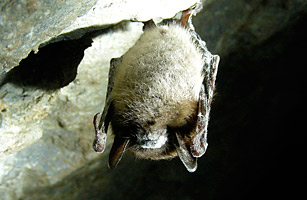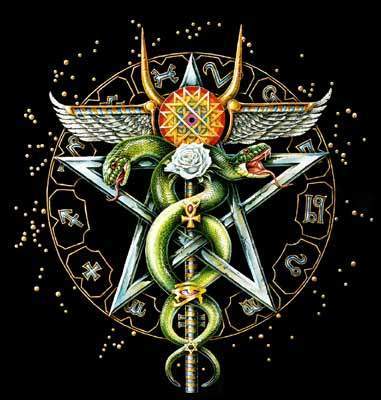A vimana is a Sanskrit word with several meanings ranging from temple or palace to mythological flying machines described in Sanskrit epics. Some modern UFO enthusiasts (like Desmond Leslie, co-author with George Adamski, in 1953, of one of the first books on UFOs entitled Flying Saucers Have Landed) have pointed to the Vimana as evidence for advanced technological civilizations in the distant past, or as support for ancient astronaut theories. Others have linked the flying machines to the legend of the Nine Unknown Men. Many researchers into the UFO enigma tend to overlook a very important fact. While it assumed that most flying saucers are of alien, or perhaps Governmental Military origin, another possible origin of UFOs is ancient India and Atlantis. Informations about Ancient Indian flying vehicles comes from ancient Indian sources; written texts that have come down to us through the centuries. There is no doubt that most of these texts are authentic; many are the well known ancient Indian Epics themselves, and there are literally hundreds of them. Most of them have not even been translated into English yet from the old Sanskrit.
The Indian Emperor Ashoka started a “Secret Society of the Nine Unknown Men”: great Indian scientists who were supposed to catalogue the many sciences. Ashoka kept their work secret because he was afraid that the advanced science catalogued by these men, culled from ancient Indian sources, would be used for the evil purpose of war, which Ashoka was strongly against, having been converted to Buddhism after defeating a rival army in a bloody battle.
The “Nine Unknown Men” wrote a total of nine books, presumably one each. Book number one was “The Secrets of Gravitation!”. This book, known to historians, but not actually seen by them dealt chiefly with “gravity control.” It is presumably still around somewhere, kept in a secret library in India, Tibet or elsewhere (perhaps even in North America somewhere). One can certainly understand Ashoka’s reasoning for wanting to keep such knowledge a secret, assuming it exists. If the Nazis had such weapons at their disposal during World War II, Ashoka was also aware devastating wars using such advanced vehicles and other “futuristic weapons” that had destroyed the ancient Indian “Rama Empire” several thousand years before.
Few years ago, the Chinese discovered some Sanskrit documents in Lhasa, Tibet and sent them to the University of Chandrigarh to be translated. Dr. Ruth Reyna of the University said recently that the documents contain directions for building interstellar spaceships! Their method of propulsion, she said, was “anti-gravitational” and was based upon a system analogous to that of “laghima,” the unknown power of the ego existing in man’s physiological makeup, “a centrifugal force strong enough to counteract all gravitational pull.”
According to Hindu Yogis, it is this “laghima” which enables a person to levitate. Dr. Reyna said that on board these machines, which were called “Astras” by the text, the ancient Indians could have sent a detachment of men onto any planet, according to the document, which is thought to be thousands of years old. The manuscripts were also said to reveal the secret of “antima”, “the cap of invisibility” and “garima”, “how to become as heavy as a mountain of lead.”
Read more on Vimana : Ancient Indian Aircraft
Tuesday, January 18, 2011
Friday, January 14, 2011
Earth's shift adds a 13th Zodiac sign - OPHIUCHUS (THE SERPENT BEARER)
You may be celebrating your fortune based on your horoscope as a Capricorn today, but you might be surprised to find that you’re probably a Sagittarius by now.
A set of new zodiac sign dates was unveiled recently, the Minnesota-based Star Tribune reported, with each symbol’s covered dates being moved by a month thanks to the moon’s gravitational pull that, as astrologers note, ‘wobbled’ the Earth’s rotation on its axis recently.
“The ancient Babylonians based zodiac signs on the constellation the sun was ‘in’ on the day a person was born. During the ensuing millenniums, the moon's gravitational pull has made the Earth "wobble" around its axis, creating about a one-month bump in the stars' alignment,” Star Tribune’s Bill Ward noted.
A blog post on the Washington Post website have also shed light on this matter, citing the explanation provided by Park Kunkle, a board member of the Minnesota Planetarium Society.
“The moon's gravitational pull has slowly moved the Earth in its axis, creating about a one-month bump in the stars' alignment... Now, during what we think as the month of Pisces, the sun is actually in the sign of Aries…”
Thus the adjustment of zodiac dates as follows:
Capricorn: Jan. 20 - Feb. 16
Aquarius: Feb. 16 - March 11
Pisces: March 11- April 18
Aries: April 18- May 13
Taurus: May 13- June 21
Gemini: June 21- July 20
Cancer: July 20- Aug. 10
Leo: Aug. 10- Sept. 16
Virgo: Sept. 16- Oct. 30
Libra: Oct. 30- Nov. 23
Scorpio: Nov. 23- Nov. 29
Ophiuchus: Nov. 29- Dec. 17
Sagittarius: Dec. 17- Jan. 20
Kunkle added that science has not proven a clear connection between the stars and the universe and its direct affects on people’s character and behavior. “Sure, we can connect harvest to the stars. But personality? No.”
"Historically, people looked at the sky to understand the world around us," he said. "But today I don't think people who are into astrology look at the sky very much."
The constellation, Ophiuchus, has been known since ancient times, and is better known as Serpentarius, the Serpent Holder. It is included in the list of 48 constellations described by Ptolemy. Ophiuchus is depicted as a man handling a serpent; his body dividing the large snake into two parts, giving way to the symbol used today as an Asclepius - the medical staff. Astrologers have not included Ophiuchus in the wheel of Astrological signs because the Sun spends only about nineteen days in this 13th sign of the Mazzaroth. Not that there wasn't a 13th sign in the Heavens, but as far as Astrologers were concerned, the Sun traveled from the constellation 'Scorpius' and then proceeded directly into the sign of Sagittarius. In reality, this was not the case. The Sun, for 19 days of the year, travels through the star constellation 'Ophiuchus' before entering Sagittarius from Scorpius - see chart below. thus The sign of Ophiuchus is patterned after the original 'Serpent Holder', Enki, a Sumerian god.
Read more at 13th Zodiac sign - OPHIUCHUS (THE SERPENT BEARER)
A set of new zodiac sign dates was unveiled recently, the Minnesota-based Star Tribune reported, with each symbol’s covered dates being moved by a month thanks to the moon’s gravitational pull that, as astrologers note, ‘wobbled’ the Earth’s rotation on its axis recently.
“The ancient Babylonians based zodiac signs on the constellation the sun was ‘in’ on the day a person was born. During the ensuing millenniums, the moon's gravitational pull has made the Earth "wobble" around its axis, creating about a one-month bump in the stars' alignment,” Star Tribune’s Bill Ward noted.
A blog post on the Washington Post website have also shed light on this matter, citing the explanation provided by Park Kunkle, a board member of the Minnesota Planetarium Society.
“The moon's gravitational pull has slowly moved the Earth in its axis, creating about a one-month bump in the stars' alignment... Now, during what we think as the month of Pisces, the sun is actually in the sign of Aries…”
Thus the adjustment of zodiac dates as follows:
Capricorn: Jan. 20 - Feb. 16
Aquarius: Feb. 16 - March 11
Pisces: March 11- April 18
Aries: April 18- May 13
Taurus: May 13- June 21
Gemini: June 21- July 20
Cancer: July 20- Aug. 10
Leo: Aug. 10- Sept. 16
Virgo: Sept. 16- Oct. 30
Libra: Oct. 30- Nov. 23
Scorpio: Nov. 23- Nov. 29
Ophiuchus: Nov. 29- Dec. 17
Sagittarius: Dec. 17- Jan. 20
Kunkle added that science has not proven a clear connection between the stars and the universe and its direct affects on people’s character and behavior. “Sure, we can connect harvest to the stars. But personality? No.”
"Historically, people looked at the sky to understand the world around us," he said. "But today I don't think people who are into astrology look at the sky very much."
The constellation, Ophiuchus, has been known since ancient times, and is better known as Serpentarius, the Serpent Holder. It is included in the list of 48 constellations described by Ptolemy. Ophiuchus is depicted as a man handling a serpent; his body dividing the large snake into two parts, giving way to the symbol used today as an Asclepius - the medical staff. Astrologers have not included Ophiuchus in the wheel of Astrological signs because the Sun spends only about nineteen days in this 13th sign of the Mazzaroth. Not that there wasn't a 13th sign in the Heavens, but as far as Astrologers were concerned, the Sun traveled from the constellation 'Scorpius' and then proceeded directly into the sign of Sagittarius. In reality, this was not the case. The Sun, for 19 days of the year, travels through the star constellation 'Ophiuchus' before entering Sagittarius from Scorpius - see chart below. thus The sign of Ophiuchus is patterned after the original 'Serpent Holder', Enki, a Sumerian god.
Read more at 13th Zodiac sign - OPHIUCHUS (THE SERPENT BEARER)
Thursday, January 6, 2011
Top 10 Strange Mass Animal Deaths
Read complete list of Mass Animal Deaths
 | 2 million fish found dead in Maryland - Authorities in Maryland are investigating the deaths of about 2 million fish in Chesapeake Bay. "Natural causes appear to be the reason," the Maryland Department of the Environment said in a news release. "Cold water stress exacerbated by a large population of the affected species (juvenile spot fish) appears to be the cause of the kill." The investigation comes days after the deaths of an estimated 100,000 fish in northwest Arkansas. "The affected fish are almost exclusively juvenile spot fish, 3 to 6 inches in length," the Maryland department said. Large winter kills of spot fish have occurred at least twice before in the state, in 1976 and 1980, the department said. |
 | Some residents in an Arkansas town must have felt transported to an earlier age of superstition when, over the first weekend of the new year, thousands of red-winged blackbirds fell dead from the sky. Like a grim omen, the same phenomenon occurred two days later, with some 500 blackbirds dropping dead in Louisiana. Scientists have puzzled over what killed them, ruling out disease or some form of poisoning. Instead, initial autopsies revealed internal trauma and hemorrhaging, possibly as a result of some violent midair collision among the blackbirds, who tend to fly in very tight formations. They could have also been disoriented by a passing thunderstorm and waterlogged by its rainfall. In any event, EPA officials swiftly arrived on the scene, wearing gas masks and fully covered in hazmat gear while cleaning away the corpses. These blackbirds certainly won't be baked in a pie. |
 | It started in 2006. Scores of honeybees began dying for seemingly no reason, prompting scientists to come up with the term "colony collapse disorder." According to the Department of Agriculture, reported bee-colony death rates in the U.S. were 29% in 2009, rising to 34% in 2010. And although a handful of plausible explanations have been offered — fungal infection, pesticides, climate change — no one really knows why they're dying. But it's not just honeybees: a recent study by the University of Illinois suggests that the four main types of bumblebee populations have plummeted more than 90% in the past 20 years. |
 | A mysterious fungal disease has been killing bats across the U.S. since the first cases were reported in New York in 2006. More than 1 million bats have died in the 14 states and two Canadian provinces where the so-called white-nose syndrome has been identified in the nocturnal mammals. The fungus itself doesn't kill the creatures, but rather attacks the hibernating animals on their mouth and nose and prevents them from sleeping. When they are aroused from their slumber, the bats leave their caves for food and burn up body-fat reserves, eventually freezing or starving to death. Wildlife commissions across the nation have ordered the closure of hundreds of caves and abandoned mines until a source of the disease and a possible cure or treatment can be identified. |
 | Over the course of two months in 2009, millions of sardines, thousands of flamingos, hundreds of penguins and nearly 60 pelicans died in seemingly unrelated incidents. First, it was the penguins. About 1,200 were found dead in late March on a remote beach in southern Chile. Next, in April, millions of sardines washed ashore nearby. Then thousands of the rare Andean flamingo abandoned their nests in the north of Chile, leaving their 2,000 chicks to die in their shells. Lastly, in late May, nearly 60 pelicans were found dead on the South American nation's central coast. What's worse, no one could say concretely why these animals had died. While some pointed to global warming, overfishing, pollution or disease, most blamed Chile's especially dry and hot 2009 summer. |
Monday, January 3, 2011
The Bloody Countess
Countess Elizabeth Bathory, Elizabeth (Erzsebet) Bathory ( 7 August 1560 – 21 August 1614), was a Hungarian countess from the renowned Bathory family, has often been described as “Countess Dracula.” She is possibly the most prolific female serial killer in history and is remembered as the "Blood Countess" and as the "Bloody Lady of Cachtice", after the castle near Trencsén (Trencín), in the Kingdom of Hungary, where she spent most of her adult life. The Báthory family defended Hungary against the Ottoman Turks. After her husband's death, she and four collaborators were accused of torturing and killing hundreds of girls and young women, with one witness attributing to them over 600 victims, though she was only convicted on 80 counts. In 1610, she was imprisoned in Cachtice Castle, where she remained bricked in a set of rooms until her death four years later. She was never formally tried in court. The case has led to legendary accounts of the Countess bathing in the blood of virgins in order to retain her youth. These stories have led to comparisons with Vlad III the Impaler of Wallachia, on whom the fictional Count Dracula is partly based, and to modern nicknames of the Blood Countess, Bloody Countess and Countess Dracula. The Bathory family was an old and illustrious one—one of the oldest in Transylvania in fact.
The family traced its descendency from Vid Bathory, a legendary and mighty warrior who had allegedly slain a dragon with a mace in what is now eastern Romania. This may have created the motif for the Romanian Christian knight Iorgi—also said to have killed a dragon— who later became St. George, patron saint of England. They were also related by what looks to have been incestuous marriages amongst various other members of similar clans. Her mother, Anna Bathory, was the sister of King Stephen of Poland, and her father Iorgi (George—her mother’s third husband) was the ruler of several countries.
However, instances of inbreeding had led to rumours of madness and monstrous births in former years. Elizabeth Bathory was born into this troubled lineage in 1560. Her mother was a devout Calvinist and an exceptionally strong character, and her father, George, was a hard-working man who had held several administrative posts under the Hapsburgs. She had at least one elder brother, one of the many Stephens (a popular name among the male Bathorys) and two younger sisters, Klara and Sofia, who disappeared from history without trace. In 1571 at age 11, Elizabeth was promised in marriage to the fifteen yearold Count Ferenc (Francis) Nadasdy, fabulously wealthy and reckoned to be one of the most eligible bachelors in Hungary at that time.
Such young betrothals were not uncommon and were usually for political reasons rather than any sort of romantic notions. In order to acquire the notable family name, Francis changed his own to that of Bathory, giving him the tradition of that family, as well as its notoriety. Francis and Elizabeth waited four years to marry, finally doing so on 8th May 1575. Elizabeth was sent from the Bathory castle and into the care of her mother-in-law, the formidable Lady Ursula Kasnizsai. Whilst she was at the court of Lady Nadasdy, plagues and epidemics raged through Eastern Europe, carrying away the poor and wretched in the villages of Hungary.
The tides of illnesses and disease, however, simply lapped around the walls of the castle at Savarin, keeping everyone there confined. Elizabeth found herself increasingly under the control of her severe and dominant mother-in-law. It was around this time that she was, according to legend, visited by a “black stranger,” perhaps a forest demon to whom she is said to have given herself. What actually might have transpired is that she had an affair with one (or more) of the servants, leading to the supposition that she may very well have been sexually promiscuous. When her mother-in-law died, Elizabeth joined her husband at the remote Csejthe Castle.
Read more at The Bloody Countess
The family traced its descendency from Vid Bathory, a legendary and mighty warrior who had allegedly slain a dragon with a mace in what is now eastern Romania. This may have created the motif for the Romanian Christian knight Iorgi—also said to have killed a dragon— who later became St. George, patron saint of England. They were also related by what looks to have been incestuous marriages amongst various other members of similar clans. Her mother, Anna Bathory, was the sister of King Stephen of Poland, and her father Iorgi (George—her mother’s third husband) was the ruler of several countries.
However, instances of inbreeding had led to rumours of madness and monstrous births in former years. Elizabeth Bathory was born into this troubled lineage in 1560. Her mother was a devout Calvinist and an exceptionally strong character, and her father, George, was a hard-working man who had held several administrative posts under the Hapsburgs. She had at least one elder brother, one of the many Stephens (a popular name among the male Bathorys) and two younger sisters, Klara and Sofia, who disappeared from history without trace. In 1571 at age 11, Elizabeth was promised in marriage to the fifteen yearold Count Ferenc (Francis) Nadasdy, fabulously wealthy and reckoned to be one of the most eligible bachelors in Hungary at that time.
Such young betrothals were not uncommon and were usually for political reasons rather than any sort of romantic notions. In order to acquire the notable family name, Francis changed his own to that of Bathory, giving him the tradition of that family, as well as its notoriety. Francis and Elizabeth waited four years to marry, finally doing so on 8th May 1575. Elizabeth was sent from the Bathory castle and into the care of her mother-in-law, the formidable Lady Ursula Kasnizsai. Whilst she was at the court of Lady Nadasdy, plagues and epidemics raged through Eastern Europe, carrying away the poor and wretched in the villages of Hungary.
The tides of illnesses and disease, however, simply lapped around the walls of the castle at Savarin, keeping everyone there confined. Elizabeth found herself increasingly under the control of her severe and dominant mother-in-law. It was around this time that she was, according to legend, visited by a “black stranger,” perhaps a forest demon to whom she is said to have given herself. What actually might have transpired is that she had an affair with one (or more) of the servants, leading to the supposition that she may very well have been sexually promiscuous. When her mother-in-law died, Elizabeth joined her husband at the remote Csejthe Castle.
Read more at The Bloody Countess
Subscribe to:
Posts (Atom)



